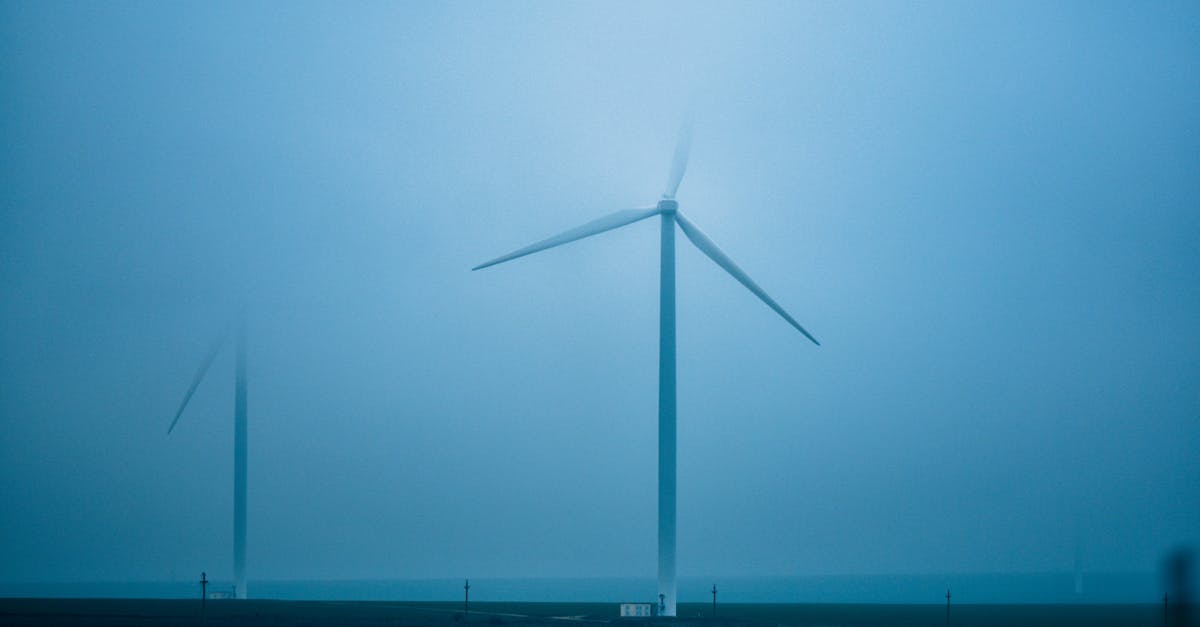Unveiling the Wonders of Atmospheric Water: A Journey to Pure, Sustainable Hydration

Pure Water, Right from the Air: The Promise of Atmospheric Water Generators
With increasing concerns about water scarcity and the safety of traditional water sources, atmospheric water generators (AWGs) have emerged as a promising solution. These ingenious devices harness the moisture present in the air to create pure, drinkable water. As a result, AWGs are gaining popularity as a sustainable and reliable water source for homes, communities, and remote areas.
Thank you for reading this post, don't forget to subscribe!
In this comprehensive article, we will delve into the world of AWGs, exploring their mechanics, safety, potential risks, and numerous benefits. We will uncover the scientific process behind extracting water from the atmosphere, examining the different types of AWGs available. We will also investigate the rigorous testing and research that ensures the safety of AWG water for consumption, including purity standards and independent certifications. Additionally, we will identify potential concerns associated with AWG water consumption, such as mineral content and maintenance requirements.
Ultimately, we will explore the advantages and positive impacts of consuming water generated by AWGs, including their role as a sustainable water source and their significance in emergency preparedness. By understanding the science and safety behind AWGs, we can make informed choices about adopting this innovative technology and harnessing the power of the atmosphere to meet our water needs.
1. Understanding Atmospheric Water Generators
Understanding Atmospheric Water Generators: Unveiling the Magic of Water from Air
Have you ever wondered how it’s possible to extract pure, drinkable water from the air around us? Enter atmospheric water generators (AWGs), innovative devices that harness the power of the atmosphere to quench our thirst. AWGs work on the principle of condensation, mimicking the natural process of rain formation. They draw in air, cool it to condense the water vapor present, and then collect and purify the resulting water. Here’s a closer look at the remarkable process:
At the heart of an AWG lies a condenser, a cold surface that causes water vapor in the air to condense into tiny droplets. As air passes over the condenser, its temperature drops, forcing the water vapor to condense and release pure water. This water is then collected and undergoes further purification processes, such as filtration and UV treatment, to ensure its safety and taste.
AWGs come in various designs and sizes, from small, portable units suitable for homes and offices to large-scale systems capable of supplying water to entire communities. They can operate using different technologies, including vapor-compression, desiccant, and thermoelectric cooling. Each technology has its advantages and is suited to specific climates and applications.
How AWGs Work
How AWGs Work: Unveiling the Science of Water from Air
Atmospheric water generators (AWGs) utilize a scientific process to extract water from the atmosphere. At the core of this process lies the principle of condensation, the same phenomenon responsible for the formation of rain and dew. AWGs replicate this process by creating a controlled environment within the device.
Air is drawn into the AWG, passing over a cold surface called a condenser. The condenser’s temperature is significantly lower than the surrounding air, causing the water vapor in the air to condense into tiny droplets. These droplets coalesce and are collected into a reservoir. The collected water then undergoes further purification stages, such as filtration and UV treatment, to ensure its purity and safety for consumption.
AWGs employ different technologies to achieve condensation, each with its own advantages. Vapor-compression AWGs use a compressor to increase the air’s temperature and humidity, making it easier to condense the water vapor. Desiccant AWGs utilize a desiccant material that absorbs moisture from the air, which is then released and condensed. Thermoelectric AWGs rely on the Peltier effect to create a temperature difference between two surfaces, facilitating condensation.
Types of AWGs
Types of AWGs: Exploring the Diverse World of Water from Air Generators
Atmospheric water generators (AWGs) come in various designs and technologies, each tailored to specific applications and environments. Here are the three main types of AWGs:
Vapor-Compression AWGs: These AWGs utilize a compressor to increase the temperature and humidity of the air, making it easier to condense the water vapor. Vapor-compression AWGs are commonly used in larger-scale applications, such as commercial and industrial settings, due to their higher water production capacity.
Desiccant AWGs: Desiccant AWGs employ a desiccant material, typically a hygroscopic salt or gel, to absorb moisture from the air. The moisture is then released from the desiccant and condensed into water. Desiccant AWGs are often used in smaller, portable units due to their lower energy consumption.
Thermoelectric AWGs: Thermoelectric AWGs leverage the Peltier effect to create a temperature difference between two surfaces. This temperature difference causes water vapor in the air to condense on the cold surface. Thermoelectric AWGs are known for their quiet operation and are often used in indoor residential applications.
2. Safety of AWG Water
Safety of AWG Water: Ensuring the Purity of Water from Air
The safety of atmospheric water generator (AWG) water is of paramount importance for human consumption. Rigorous testing and research have been conducted to ensure that AWG water meets or exceeds drinking water safety regulations set by organizations such as the Environmental Protection Agency (EPA), the National Science Foundation (NSF), and the World Health Organization (WHO).
AWG manufacturers employ stringent quality control measures throughout the production process, from sourcing the raw materials to testing the final product. The water produced by AWGs undergoes multiple stages of purification, including filtration, reverse osmosis, and UV disinfection, to remove impurities, contaminants, and microorganisms. These processes effectively eliminate harmful substances, ensuring the safety and purity of AWG water.
Independent testing laboratories and certification bodies also play a vital role in verifying the safety of AWG water. They conduct rigorous testing to evaluate the water’s quality against established drinking water standards. AWGs that meet these standards are awarded certifications, providing assurance to consumers that the water is safe for consumption.
Purity Standards
Purity Standards: Ensuring AWG Water Meets the Highest Quality
To ensure the safety and purity of atmospheric water generator (AWG) water, manufacturers adhere to stringent purity standards established by regulatory bodies such as the Environmental Protection Agency (EPA), the National Science Foundation (NSF), and the World Health Organization (WHO). These standards outline the maximum allowable levels of various contaminants, including heavy metals, bacteria, and chemicals, in drinking water.
AWG manufacturers implement rigorous quality control measures throughout the production process to meet or exceed these purity standards. The water produced by AWGs undergoes multiple stages of purification, such as filtration, reverse osmosis, and UV disinfection, to remove impurities, contaminants, and microorganisms. These processes effectively eliminate harmful substances, ensuring the safety and purity of AWG water.
Independent testing laboratories and certification bodies play a crucial role in verifying the purity of AWG water. They conduct rigorous testing to evaluate the water’s quality against established drinking water standards. AWGs that meet these standards are awarded certifications, providing assurance to consumers that the water is safe for consumption.
Independent Testing
Independent Testing: Ensuring AWG Water Quality through Rigorous Analysis
To provide consumers with an added layer of assurance, atmospheric water generator (AWG) manufacturers submit their products for independent testing and certification by third-party laboratories and organizations. These entities conduct rigorous testing to evaluate the water quality of AWGs against established drinking water standards set by regulatory bodies such as the EPA, NSF, and WHO.
The testing process involves analyzing the water for a wide range of contaminants, including heavy metals, bacteria, chemicals, and other impurities. The water samples are subjected to various tests to determine their compliance with safety regulations. AWGs that meet or exceed these standards are awarded certifications, which serve as independent verification of their water quality.
By undergoing independent testing, AWG manufacturers demonstrate their commitment to transparency and consumer safety. The certifications provide consumers with peace of mind, knowing that the water produced by their AWGs has been thoroughly tested and meets or exceeds drinking water safety standards.
3. Potential Risks and Considerations
Potential Risks and Considerations: Exploring Concerns Associated with AWG Water Consumption
While atmospheric water generators (AWGs) offer a promising solution for providing clean and sustainable water, it’s important to be aware of potential risks and considerations associated with their use:
Mineral Content: AWG water may have a lower mineral content compared to traditional water sources like groundwater or surface water. Minerals such as calcium and magnesium are naturally present in water and contribute to its taste and health benefits. Consuming water with low mineral content over an extended period could potentially lead to mineral deficiencies if not supplemented through other dietary sources.
Maintenance and Hygiene: AWGs require regular maintenance and cleaning to ensure optimal performance and water quality. Proper maintenance includes cleaning the filters, reservoir, and other components according to the manufacturer’s instructions. Neglecting maintenance can lead to the accumulation of bacteria or mold, potentially compromising the safety of the water.
Mineral Content
Mineral Content: Exploring Differences between AWG Water and Traditional Sources
Atmospheric water generators (AWGs) produce water by extracting moisture from the air, while traditional water sources like groundwater and surface water contain minerals that have been dissolved from rocks and soil over time. As a result, there can be differences in the mineral content of water obtained from these sources:
Lower Mineral Content: AWG water may have a lower mineral content compared to traditional water sources. This is because the water vapor extracted from the air does not contain the same level of dissolved minerals as water that has been in contact with minerals over an extended period.
Potential Health Implications: Consuming water with low mineral content over an extended period could potentially lead to mineral deficiencies if not supplemented through other dietary sources. Minerals such as calcium and magnesium are essential for various bodily functions, including bone health, muscle function, and nerve transmission.
Maintenance and Hygiene
Maintenance and Hygiene: Ensuring AWG Performance and Water Quality
To maintain the efficiency and water quality of atmospheric water generators (AWGs), proper upkeep and cleaning practices are essential:
Regular Cleaning: AWGs require regular cleaning to prevent the buildup of bacteria, mold, and other contaminants. The frequency of cleaning will vary depending on the specific model and usage patterns. Generally, it is recommended to clean the filters, reservoir, and other components according to the manufacturer’s instructions.
Filter Maintenance: The filters in AWGs play a crucial role in purifying the water. Regularly inspecting and replacing the filters as needed ensures that the AWG continues to produce clean and safe water. Follow the manufacturer’s guidelines for filter replacement intervals.
Hygiene Practices: When handling AWG water, it is important to maintain good hygiene practices to avoid contamination. This includes washing hands before handling the AWG or its components and regularly cleaning any containers or utensils used for storing or dispensing the water.
4. Benefits of AWG Water
Benefits of AWG Water: Uncovering the Advantages of Atmospheric Water
Consuming water generated by atmospheric water generators (AWGs) offers several advantages and positive impacts:
Sustainable Water Source: AWGs provide a sustainable and renewable source of water, reducing reliance on traditional water sources that can be affected by factors such as drought and climate change. By extracting water from the air, AWGs can provide access to clean water in areas with limited or unreliable water resources.
Pure and Clean Water: AWGs produce pure and clean water that meets or exceeds drinking water safety standards. The water undergoes multiple stages of purification, including filtration, reverse osmosis, and UV disinfection, to remove impurities and microorganisms, ensuring its safety and quality.
Convenience and Accessibility: AWGs offer convenience and accessibility to clean water, especially in remote areas or during emergencies when traditional water sources may be compromised. They can provide a reliable source of water for homes, communities, and travelers.
Sustainable Water Source
Sustainable Water Source: AWGs as a Renewable Water Solution
Atmospheric water generators (AWGs) offer a sustainable and renewable source of water, reducing our reliance on traditional water sources. By extracting water from the air, AWGs provide access to clean water even in areas with limited or unreliable water resources.
AWGs are particularly valuable in regions affected by drought or water scarcity. They can provide a consistent and independent water supply, reducing the strain on traditional water sources. Additionally, AWGs can be powered by renewable energy sources, such as solar or wind power, making them a truly sustainable water solution.
The use of AWGs promotes water conservation and reduces the environmental impact associated with traditional water extraction methods, such as groundwater pumping or desalination. By harnessing the power of the atmosphere, AWGs offer a promising solution for meeting our growing water needs in a sustainable and environmentally friendly manner.
Emergency Preparedness
Emergency Preparedness: AWGs as a Backup Water Source in Times of Need
Having an atmospheric water generator (AWG) on standby provides a reliable backup water source during emergencies or disasters. When traditional water sources are compromised or disrupted, AWGs can generate clean and safe water from the air, ensuring access to this vital resource.
In the aftermath of natural disasters such as hurricanes, floods, or earthquakes, AWGs can be deployed to provide immediate water relief to affected communities. They are particularly useful in remote or isolated areas where access to clean water may be limited. AWGs can also be used as a backup water source for homes and businesses during power outages or water supply disruptions.
By providing a decentralized and independent water supply, AWGs enhance community resilience and preparedness. They offer peace of mind, knowing that access to clean water is available even during challenging times.
Are AWGs expensive to operate?
The operating cost of AWGs primarily depends on the size and technology used. Smaller, portable AWGs typically consume less energy and have lower operating costs, while larger-scale AWGs may have higher energy consumption. However, compared to traditional water sources such as municipal water supply or bottled water, AWGs can offer long-term cost savings, especially in areas with limited or expensive water resources.
Can AWGs produce enough water for a household?
AWGs vary in their water production capacity, ranging from small units that can generate a few liters per day to larger systems capable of producing hundreds of liters per day. For a household’s daily water needs, including drinking, cooking, and sanitation, an AWG with an appropriate production capacity would be required. Some AWGs can be connected to external water storage tanks to meet higher water demands.
What is the environmental impact of AWGs?
AWGs have a lower environmental impact compared to traditional water sources such as desalination or groundwater pumping. They do not contribute to water scarcity or depletion of natural water resources. Additionally, AWGs can be powered by renewable energy sources, such as solar or wind power, further reducing their environmental footprint.




